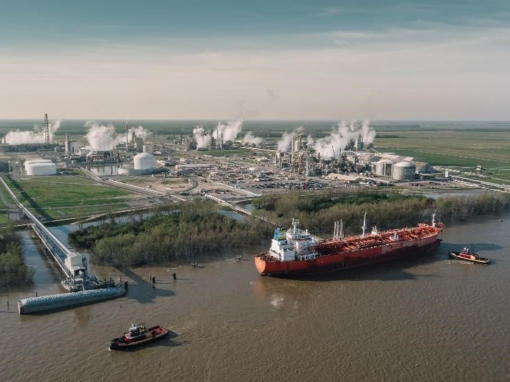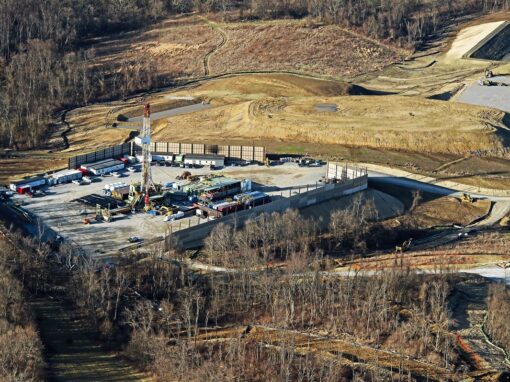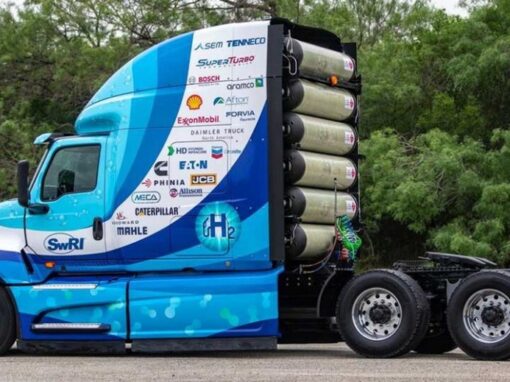April 23, 2025
by Solei’ Morvil
The Gulf States—Texas, Louisiana, Mississippi, Alabama, and Florida—are becoming central to the United States’ push toward a clean hydrogen economy, with each state contributing unique assets, strategic investments, and policy initiatives that collectively position the region as a national and global hydrogen leader. Rooted in a long history of oil and gas development, the Gulf Coast boasts robust industrial capabilities, deepwater ports, and extensive pipeline networks—existing infrastructure that naturally lends itself to the integration and scaling of hydrogen technologies. This strong energy foundation gives the region a competitive edge in transitioning toward low-carbon solutions without building entirely from scratch.
Texas stands out as a powerhouse of hydrogen innovation. Programs under the Texas Emissions Reduction Plan (TERP) are supporting the adoption of alternative fuels, including hydrogen, in public fleets. FCHEA member Electric Hydrogen is partnering with Texas-based Titan to deliver modularized manufacturing for electrolyzer plants, helping scale U.S. hydrogen production and project deployment. Plug Power, another FCHEA member and key industry player, is also investing in Texas with support from a $1.66 billion Department of Energy loan guarantee. Its Graham, Texas green hydrogen plant is expected to produce 15 tons of liquid hydrogen daily to serve major corporations like Walmart and Amazon. FCHEA member John Cockerill Hydrogen partnered with FCHEA member Johnson Matthey and ETFuels to develop a 120,000 ton e-methanol project. John Cockerill Hydrogen also received $34M in tax credits to build their gigafactory in Baytown, Texas, as well as a 230 million € (261 million USD) investment from SLB and others to accelerate its electrolyzer strategy.
Louisiana is leveraging its industrial backbone and well-developed hydrogen value chain to accelerate clean energy innovation. Through the H2theFuture initiative, the state is fostering the development of a clean hydrogen cluster to drive workforce development, decarbonization, and economic growth. Its proximity to existing hydrogen infrastructure and deepwater ports makes it a strategic anchor in the emerging hydrogen economy.
Mississippi is integrating clean hydrogen into the power generation mix. Entergy Mississippi has broken ground on the $1.2 billion Delta Blues Advanced Power Station in Greenville, designed to use a blend of natural gas and hydrogen to provide electricity to nearly 385,000 homes. This project is part of the state’s broader effort to modernize its energy system and reduce carbon emissions while ensuring reliability and resilience.
Alabama benefits from access to the Gulf Coast hydrogen pipeline infrastructure, which supports regional refineries and ammonia production. This positions the state to capitalize on future hydrogen production and distribution opportunities as demand and technology continues to grow.
Florida is pioneering green hydrogen integration in the power sector. At the center of this effort is FCHEA member Cummins, which is supplying the electrolyzer for Florida Power & Light’s 20 MW green hydrogen facility—the first of its kind in the state. The facility will use solar energy to produce hydrogen via electrolysis, blending it into natural gas operations at the 1.75 GW Okeechobee Clean Energy Center. State-level incentives and supportive policies are helping to catalyze broader hydrogen infrastructure development across the state.
Together, these states are collaborating through the Gulf Coast Hydrogen Hub, a multibillion-dollar initiative aiming to deploy electrolysis, natural gas reforming with carbon capture, and critical pipeline infrastructure across the region. Backed by up to $1.2 billion in federal funding, the hub is expected to reduce carbon emissions by 7 million metric tons annually while supporting applications across freight transportation, marine fuel, and industrial processes.
With strong policy support, world-class infrastructure, and a deep-rooted industrial base, the Gulf States are not only advancing the U.S. hydrogen economy but also shaping the future of the global energy transition.



